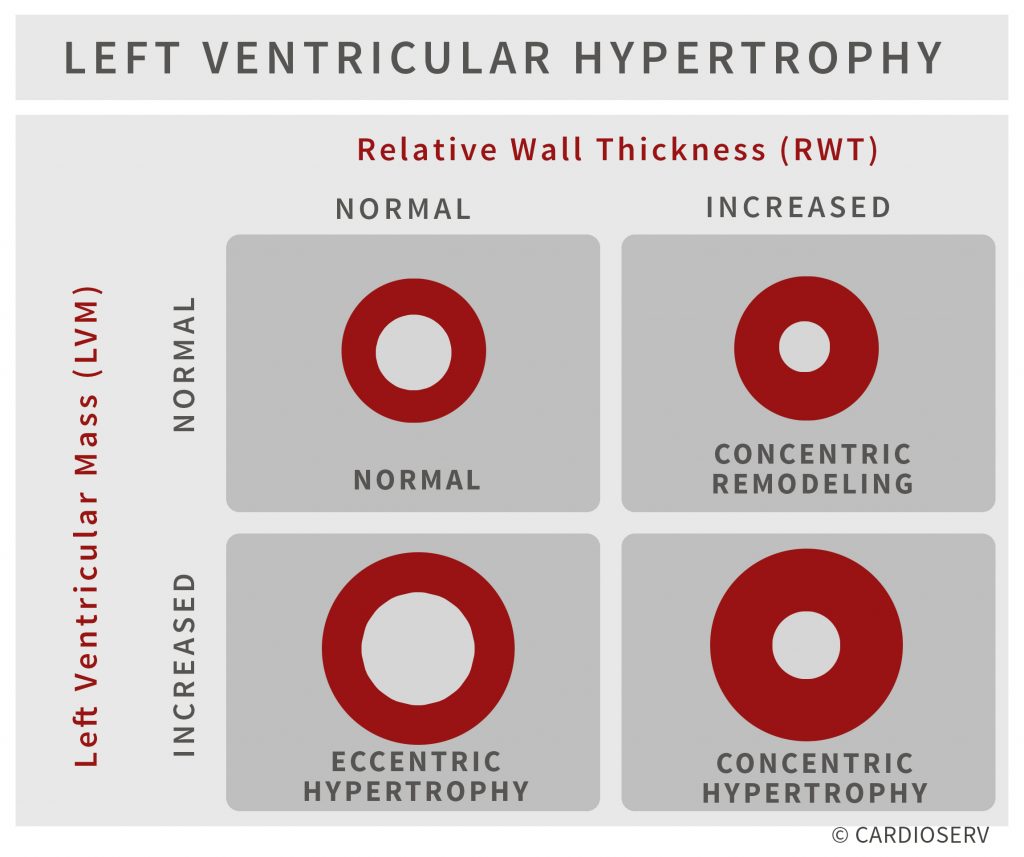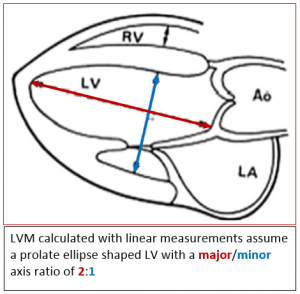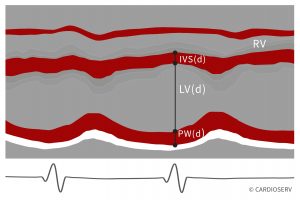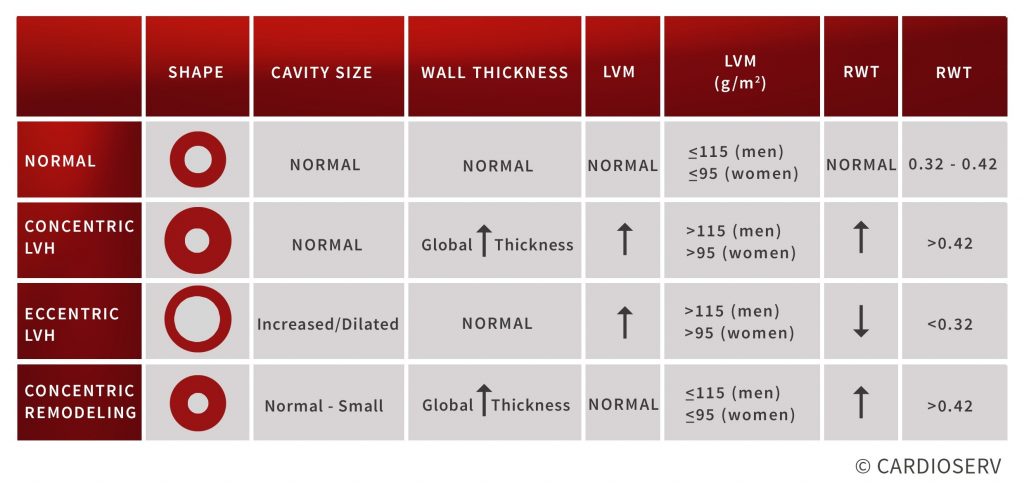As diagnostic imaging professionals, we often perform echocardiograms on patients with hypertension to monitor the thickness, strength and wall motion of the heart. Last week we launched our two-part blog on left ventricular hypertrophy (LVH). In part one we explained the pathophysiology behind the various categories of LVH along with the echocardiographic findings. We discussed how LVM and RWT plays a role in identifying the categories of LVH. This week we will answer the question: What is LVM and RWT and how do we obtain these values?

 All LVM algorithms are based on the subtraction of the LV cavity from the LV epicardium. The formula used for calculating the LV mass from linear dimensions assumes an ellipse shape with a major/minor axis ratio of 2:1. Needless to say, if you do not have a prolated ellipsed shaped LV this would not be the best formula to use!
All LVM algorithms are based on the subtraction of the LV cavity from the LV epicardium. The formula used for calculating the LV mass from linear dimensions assumes an ellipse shape with a major/minor axis ratio of 2:1. Needless to say, if you do not have a prolated ellipsed shaped LV this would not be the best formula to use!
Based upon the assumption of a normally shaped Left Ventricle the Cube Formula uses the following linear measurements:
ASE recommends using M-Mode in the parasternal short axis when specifically calculating the LVM but it is ok to use the linear measurements you obtain during your routine study (whether in 2D or M-Mode, PLAX or PSAX). The advantages to M-Mode for LVM include:
Remember that LV Mass (LVM) is a formula that your ultrasound machine will calculate for you, once you enter the measurements needed to complete the formula. You do not need to worry about the actual formula but for all you curious folks here it is:
LVM(g) = 0.8 x 1.04 x [(IVSd + LVd + PWd)3 – LVd3] + 0.6g

You need to make sure your ultrasound system is set up to calculate the LVM. Usually this requires going into your configuration menu and selecting which formula you want included in your measurement package. Remember to select the LVM Linear Cube formula. Questions?
To quote ASE: “The main contribution of echocardiography to the management of hypertension is the assessment of left ventricular mass (LVM)”. We need to start reporting on LV Mass on all patients with hypertension. The normal reference range for LVM is gender specific and indexed to BSA.

Relative Wall Thickness helps calculate if the ventricular morphology has altered. The RWT reports the relationship between the wall thickness and cavity size. The RWT is calculated by doubling the dimension of the posterior wall and dividing by the LV dimension.
RWT = ( 2 x PWd ) / LVd
Another variable of this equation would be to add the IVS and PW instead of multiplying the PW by two. The reason this method is less preferred is because septal measurements may be confounded by the presence of septal bulge.
RWT = (IVSd + PWd) / LVd
Remember that Relative Wall Thickness (RWT) is also just a formula. Your ultrasound machine will calculate this for you once you enter the measurements needed to complete the formula. Again, you will already have obtained your posterior wall (PWd) and left ventricular dimensions (LVd). You will just need to make sure your ultrasound system is set up to calculate and display the RWT formula.
The ASE recommends “Description of LV geometry, using at the minimum the four categories of normal geometry, concentric remodeling, and concentric and eccentric hypertrophy,
should be a standard component of the echocardiography report.” The normal reference range for RWT is 0.32 – 0.42 regardless of gender or BSA.






Mar
2017
Mar
2017
Mar
2017
Jun
2021
Mar
2017
Mar
2017
Mar
2017
Mar
2017
Apr
2017
Mar
2017
Apr
2017
Apr
2017
Jul
2018
Jun
2019
Jun
2020